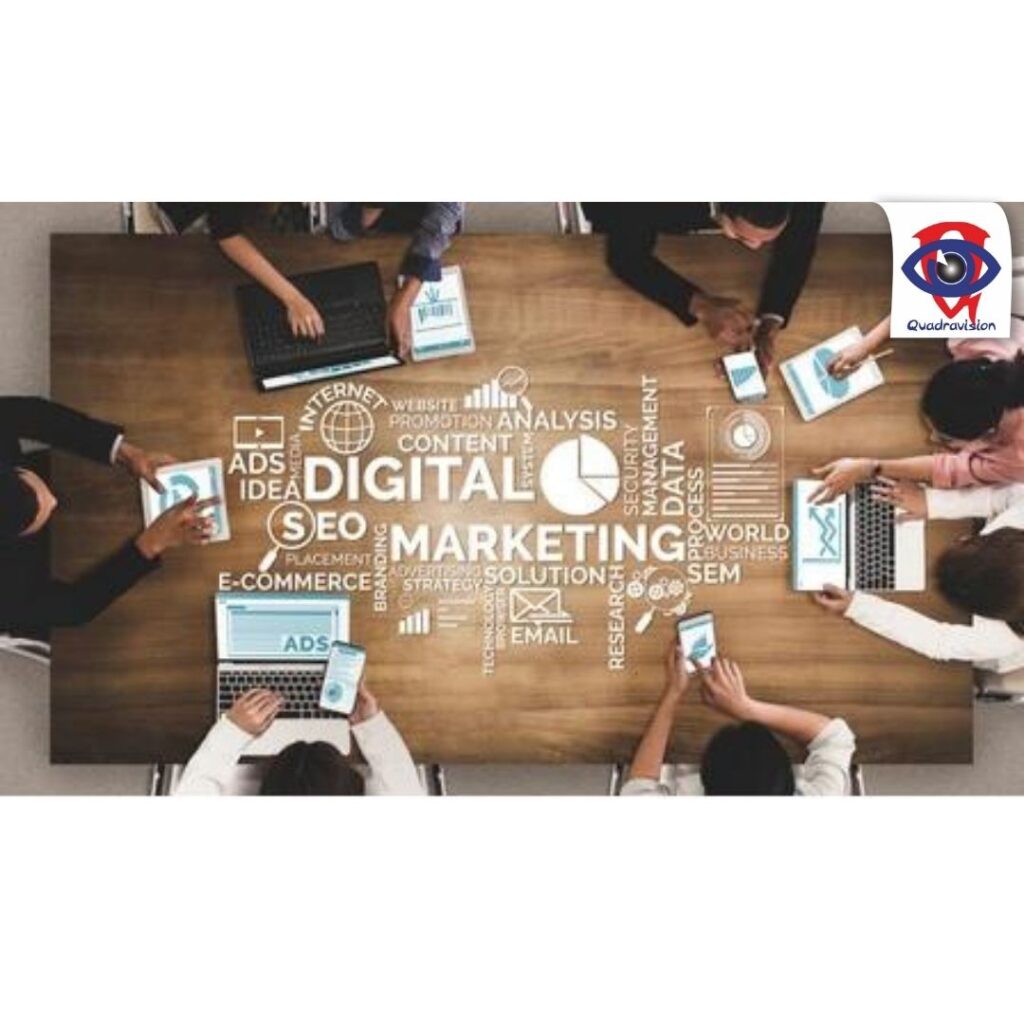Digital Marketing
Digital marketing is a subset of marketing. It is the practice of promoting goods and services through the use of the Internet and other online-based digital platforms. Including mobile phones, desktop computers, and other digital media and platforms. As a result of its development in the 1990s and 2000s, brands and companies now employ technology differently for marketing.

Digital marketing campaigns are increasingly common. Utilizing a variety of strategies including search engine optimization (SEO), search engine marketing (SEM), content marketing, influencer marketing, content automation, campaign marketing, data-driven marketing, e-commerce marketing, and social media marketing. These strategies have become more common as digital platforms have become more integrated into marketing strategies and daily life, and as more people use digital devices instead of visiting physical stores. Digital marketing includes non-Internet platforms that offer digital media, including television, mobile phones (SMS and MMS), callback, and on-hold ringtones. Digital marketing and online advertising are separated by the expansion to non-Internet outlets.
Pros:
- Better tracking and metrics are available with digital marketing.
- Access to a huge audience and the capacity for incredibly targeted advertising are both provided by digital marketing: With a digital strategy, it is simpler to promote to those who live far away from you while keeping a close eye on those who have certain wants and traits. You want to advertise to small company owners who run stores selling Christmas ornaments. With the help of Facebook and Google Ads’ highly specialized yet broadly applicable segmentation capabilities, for instance. You can discover a way to accomplish that. Additionally, you may use Google search information to show adverts and offers to customers who are especially looking for accounts and deals with local banks. This is a very efficient way to reach potential customers who are looking for financial services.
- Awareness of digital marketing is growing: Consumer use of all digital products is increasing. Music, movies, magazines, and even network TV are moving toward digital formats. According to report estimates that the average adult spends more than 11 hours per day staring at a device. Most people will see your content online.
- Compared to many traditional marketing strategies, digital marketing is more affordable to set up and maintain: Digital assets can be developed more quickly, cheaply, and easily, and once created, they are also simpler to manage and edit for reuse. On the other side, it is expensive and rarely reused to produce TV and radio advertisements.
- New technologies like AI and machine learning are accessible to you thanks to digital marketing.
- Access to social media is provided via digital marketing: Banks of all sizes are utilizing social media to raise awareness of the institution, engage with clients and potential clients, and get rapid feedback on what is and is not working. A social media presence necessitates proactive reputation management on the institution’s behalf, but when done correctly, it fosters a real-time online community and dialogue—something that was previously impossible.
- Digital marketing is customizable and enables better A/B testing and personalization: Implementing highly customized and individualized campaigns and communications are becoming easier and more cost-effective every day thanks to marketing automation solutions. Better onboarding initiatives and communications are made possible as a result, aiding several institutions in starting to build stronger ties with customers as soon as accounts are opened. With digital marketing, you can instantly assess the effectiveness of every component of a campaign, from the offer itself to the headlines, colors, graphics, and layout. This capacity can help you learn how your prospects and clients are reacting. Apply what you’ve learned next to keep your campaigns as effective as possible.
Cons :
- From a visual aspect, digital marketing can have minimal influence: The internet is a cluttered place with millions of advertisements that are simple to ignore. On a phone’s tiny screen, this is especially true.
- Digital marketing can lead to content and email overload: The frequency of messages you send to consumers and prospects should be carefully considered.
- Digital marketing can be mimicked for fraudulent activities: All of us have seen warnings on bank websites about phony calls and emails to clients. Unfortunately, this trend is here to stay, thus bank marketers must be watchful and aggressive to prevent cybercrimes.
- Negative experiences and negative social media evaluations can be made worse by digital.
Visit our Instagram page for more content
Newspaper Marketing

Advertising in newspapers simply means placing advertisements for your company in print or online periodicals. One of the first and most popular methods of promoting various companies, goods, and services has been newspaper advertising. There is still a tone of room for companies to promote their brands through newspaper advertising. People still enjoy reading newspapers, even in this digital age, and 34% of consumers still believe in print ads. Even though newspaper advertising may seem like a straightforward procedure, it is anything from it.
Pros:
- Newspapers are a reliable source of news: Businesses or people who advertise in a newspaper inherit the reputation of that publication. Because they value the information it carries, the majority of people who subscribe to a newspaper will read it frequently. Additionally, consumers already appreciate the overall product. They are using—the newspaper—they will be prepared to accept the value proposition presented in an advertisement.
- Consumers are more willing to accept newspaper advertising: People are not naive. They are aware that selling advertising space is necessary for a local newspaper to remain in operation. Local companies that invest in newspaper advertising must also be able to sustain their operations. Because of this connection, customers pay attention to newspaper ads and patronize neighborhood stores as a way to give back to their neighborhood.
- Newspapers focus on current events for a minimal investment: A newspaper ad can be placed for a variety of reasons. Always a possibility is daily advertising. Events being organized by a company or a community may receive special ads. In exchange, it costs very little to become aware of what a particular brand is up to because all it takes is one advertisement to get people interested in an occasion, a fresh item, or some other requirement.
- It could be applied to the sharing of content.
- It can be used as a form of content sharing: Nowadays, some newspaper ads are formatted to look like news articles. These advertisements offer readers 250–400 words of precise content that can guide them to the intended conclusion. Almost anything can be the subject of this content, including new initiatives, the benefits of brand-new goods, or even how a new hire might be able to alter the culture of the company. This completely omits the press release procedure.
- Consumers take the advertising with them.
- The advertising follows the consumer: Newspaper advertisements can be designed such that you can remove one that isn’t working. Even though some newspapers need contracts. You can still replace a non-performing ad with a new one if the situation calls for it. Other print media don’t usually provide this versatility.
Cons:
- There is a slow and steady erosion of newspaper readership levels: Due to the drastic decline in readership. Several newspapers are putting more of an emphasis on their online presence. In order to get the most out of their investment, advertisers must buy space both in print and online. Because after the pandemic circulation of the newspaper has reduced.
- To pay a surcharge to guarantee advertisement placement: the ad will run where the newspaper needs it to run to fill space unless you’re ready to purchase a specialized package at a greater price. This indicates that there is a possibility that you will be on Page 2 or a page with little to no viewership. In newspaper advertising, targetability has a cost, and the return on investment isn’t always obvious.
- The cost of newspaper advertising is not as competitive
- There is no way to control target demographics within a newspaper that is delivered: Newspapers provide excellent advertising opportunities when geographic locations are being targeted. What they don’t do well is provide much help to specific target demographics. 9 out of 10 people are regular subscribers to a newspaper.
- Newspaper advertising doesn’t allow for errors to be corrected.


I do not even understand how I ended up here, but I assumed this publish used to be great